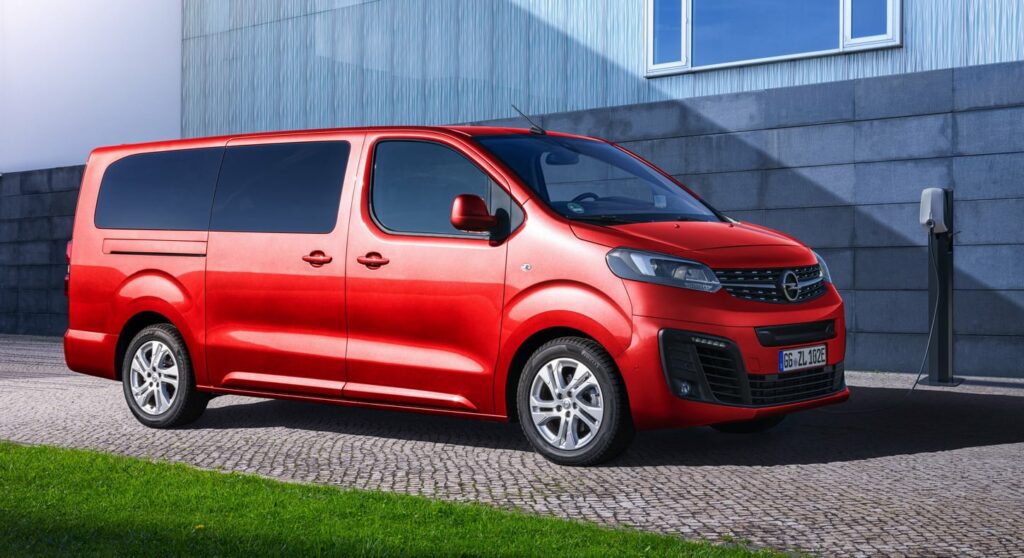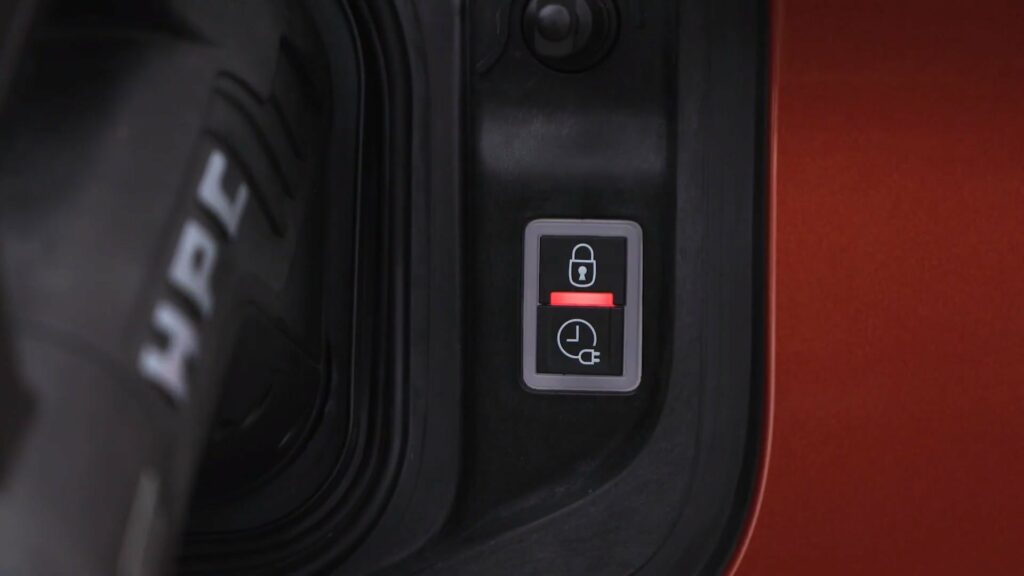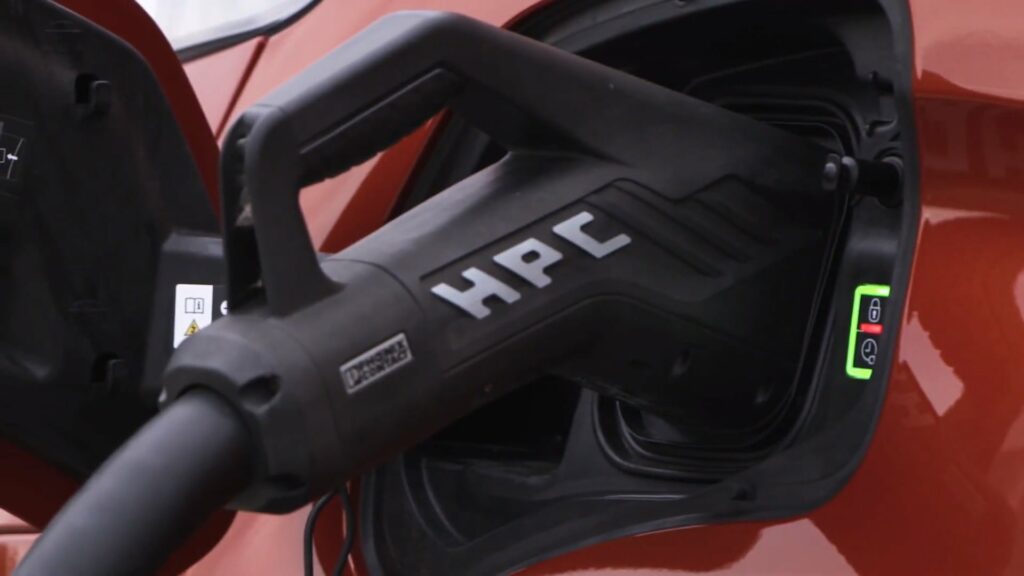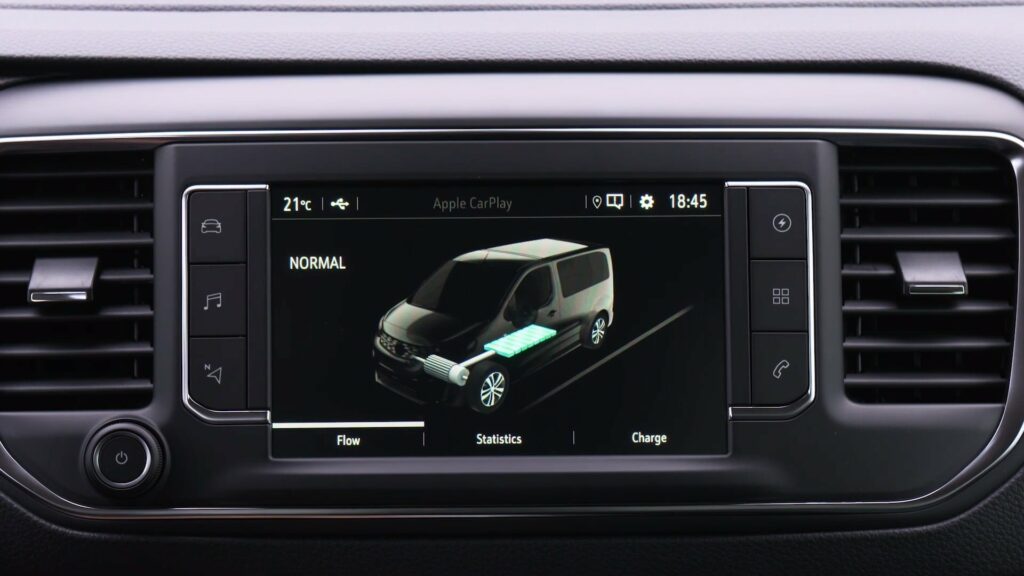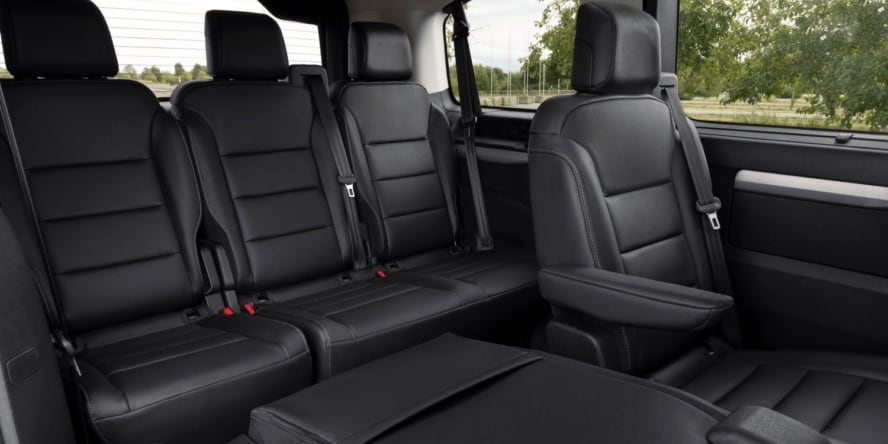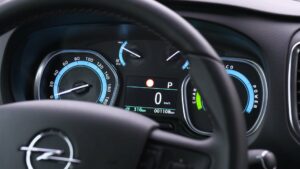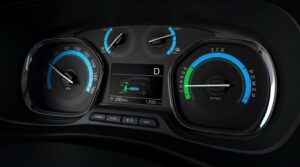Opel Zafira-e Life S 50 kWh
Opel Zafira-e Life S 50 kWh is a fully electric minivan that is part of Opel’s Zafira-e Life range. It features a 50 kWh lithium-ion battery pack that provides a range of up to 180 kilometers on a single charge, according to the WLTP cycle.

The Zafira-e Life S can be charged using a standard household socket, a wall box, or a public charging station, and can be charged up to 80% in just 30 minutes using a DC fast charger. It has a maximum power output of 100 kW (136 PS) and can accelerate from 0 to 100 km/h (62 mph) in 12.1 seconds.
The minivan can seat up to seven passengers and has a spacious interior with various seating configurations. It also has advanced safety features, including automatic emergency braking, lane departure warning, and adaptive cruise control.

Overall, the Opel Zafira-e Life S 50 kWh is a practical and environmentally friendly minivan that offers ample range and versatility for families or businesses in need of a spacious and efficient people carrier.
| Performance | |
| Acceleration 0 – 100 km/h | 12.1 sec |
| Top Speed | 130 km/h |
| Electric Range | 180 km |
| Total Power | 100 kW (136 PS) |
| Total Torque | 260 Nm |
| Drive | Front |
| Battery and Charging | |
| Battery Capacity | 50.0 kWh |
| Battery Useable | 45.0 kWh |
| Europe | |
| Charge Port | Type 2 |
| Port Location | Left Side – Front |
| Charge Power | 7.4 kW AC |
| Charge Time (0->180 km) | 7h15m |
| Charge Speed | 25 km/h |
| Fastcharge Port | CCS |
| FC Port Location | Left Side – Front |
| Fastcharge Power (max) | 99 kW DC |
| Fastcharge Time (18->144 km) | 31 min |
| Fastcharge Speed | 240 km/h |
| Energy Consumption | |
| EVDB Real Range | |
| Range | 180 km |
| Vehicle Consumption | 250 Wh/km |
| CO2 Emissions | 0 g/km |
| Vehicle Fuel Equivalent | 2.8 l/100km |
| WLTP Ratings | |
| Range | 230 km |
| Rated Consumption | No Data |
| Vehicle Consumption | 196 Wh/km |
| CO2 Emissions | 0 g/km |
| Rated Fuel Equivalent | No Data |
| Vehicle Fuel Equivalent | 2.2 l/100km |
|
Rated = official figures as published by manufacturer. Rated consumption and fuel equivalency figures include charging losses.
|
|
|
Vehicle = calculated battery energy consumption used by the vehicle for propulsion and on-board systems.
|
|
| Real Energy Consumption Estimation between 167 – 360 Wh/km | |
| City – Cold Weather * | 231 Wh/km |
| Highway – Cold Weather * | 360 Wh/km |
| Combined – Cold Weather * | 290 Wh/km |
| City – Mild Weather * | 167 Wh/km |
| Highway – Mild Weather * | 290 Wh/km |
| Combined – Mild Weather * | 225 Wh/km |
| Energy use for each trip will vary considerably depending on the driver and the conditions. Therefore, we have provided a range of estimates which can be useful in developing an understanding of the potential benefits of this technology. | |
| Dimensions and Weight | |
| Length | 4606 mm |
| Width | 1920 mm |
| Width with mirrors | 2204 mm |
| Height | 1905 mm |
| Wheelbase | 2925 mm |
| Weight Unladen (EU) | 1932 kg |
| Gross Vehicle Weight (GVWR) | 2855 kg |
| Max. Payload | 998 kg |
| Cargo Volume | No Data |
| Cargo Volume Max | No Data |
| Cargo Volume Frunk | 0 L |
| Roof Load | 0 kg |
| Tow Hitch Possible | Yes |
| Towing Weight Unbraked | 750 kg |
| Towing Weight Braked | 1000 kg |
| Vertical Load Max | 60 kg |
| Miscellaneous | |
| Seats | 9 people |
| Isofix | Yes, 3 seats |
| Turning Circle | 11.3 m |
| Platform | PSA EMP2 |
| Car Body | Small Passenger Van |
| Segment | N – Commercial |
| Roof Rails | No |
| EV Dedicated Platform | No |
Home and Destination Charging (0 -> 100%)
A public charging station is required to use the highest possible charging rate. The EVSE/charging station’s charging capacity affects how long it takes to fully charge the battery. The table below shows all possible options for fully charging the Opel Zafira-e Life S 50 kWh.
In Europe, plugging an electric car into an outlet is often as easy as plugging it into a household outlet, but there are differences from country to country. The table below shows the different ways to charge the Opel Zafira-e Life S 50 kWh, but in some countries some chargers may not be available.
Type 2 ( IEC 62196)

| Charging Point | Max. Power | Power | Time | Rate |
| Standard 7.4 kW On-Board Charger | ||||
| Wall Plug (2.3 kW) | 230V / 1x10A | 2.3 kW | 23h15m | 8 km/h |
| 1-phase 16A (3.7 kW) | 230V / 1x16A | 3.7 kW | 14h30m | 12 km/h |
| 1-phase 32A (7.4 kW) | 230V / 1x32A | 7.4 kW | 7h15m | 25 km/h |
| 3-phase 16A (11 kW) | 230V / 1x16A | 3.7 kW | 14h30m | 12 km/h |
| 3-phase 32A (22 kW) | 230V / 1x32A | 7.4 kW | 7h15m | 25 km/h |
| Optional 11.0kW On-Board Charger | ||||
| Wall Plug (2.3 kW) | 230V / 1x10A | 2.3 kW | 23h15m | 8 km/h |
| 1-phase 16A (3.7 kW) | 230V / 1x16A | 3.7 kW | 14h30m | 12 km/h |
| 1-phase 32A (7.4 kW) | 230V / 1x32A | 7.4 kW | 7h15m | 25 km/h |
| 3-phase 16A (11 kW) | 400V / 3x16A | 11 kW | 5 hours | 36 km/h |
| 3-phase 32A (22 kW) | 400V / 3x16A | 11 kW | 5 hours | 36 km/h |
Fast Charging (10 -> 80%)
If you want to enjoy driving an electric car, one of the most important features to consider is the number of miles per hour the car can travel while charged. This is called the “range” of the car. All electric cars have a certain range, even if they are 100% charged. This is because they do not have an internal combustion engine to lean on if you need to drive a long distance.
Max. Power: The maximum power provided by the charging point
Avg. Power: The average power provided by the charging point during a session of 10% to 80%.
Time: the time it takes to charge from 10% to 80%
Speed: the average charging rate during the session of 10% to 80%
Combined Charging System (CCS Combo 2)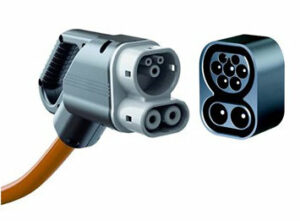
| Charging Point | Max. Power | Avg. Power | Time | Rate |
| CCS (50 kW DC) | 50 kW | 46 kW | 43 min | 170 km/h |
| CCS (175 kW DC) | 99 kW | 65 kW | 31 min | 240 km/h |
| CCS (350 kW DC) | 99 kW | 65 kW | 31 min | 240 km/h |
| Brand | Opel |
| Model | Zafira-e Life S 50 kWh |
| Body Style | Small Passenger Van |
| Car Engine | electric |
| Motor power | 100 |
| Maximum Torque, Nm | 260 |
| Battery Energy, kWh | 50.0 |
| Power reserve (NEDC/EPA/WLTP), km | - / - / 180 |
| Level Charging (230/400/DC), hours | - / 5.0 / 0.31 |
| Electrical Acceleration, 0-100 km/h (0-62.1 mph) in sec | 12.1 |
| Top Speed, km/h | 130 |





